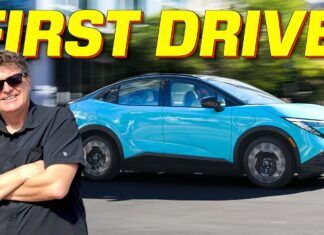Often, hybrid and alternative fuel drivers devote hours of research before purchasing or leasing their eco-fuel sipper. But when it comes time to replace the original tires, they generally take the easier path. They follow the tire shop’s recommendations, slap on the new tires, and they are back to slowing up traffic in the fast lane. Tires are all the same, after all…or are they?
Before the rubber meets the road, a little extra attention to the details will reap the rewards of low rolling resistance, better traction, improved handling, longevity and, potentially, an increase in fuel economy. Check out our review of the Michelin Energy Saver All-Season tires to see if they are the best tires for your hybrid or EV.
What is the Structure of Michelin Energy Saver Tires?
The overall design goal of the Energy Saver All-Season tire is to maximize fuel economy without compromising tread life or safety.
Michelin’s Energy Saver construction—plus a unique silica-based tread compound—keep the tire running cooler to try and achieve better fuel efficiency. The tread design is symmetric and features a siped, independent tread block. This pattern is responsible for the Energy Saver’s predictable handling, max stopping performance, and traction on dry or wet surfaces.
When the roads become soaked with rain, circumferential and lateral grooves direct water through the tread design to enhance wet traction and resist hydroplaning.
Michelin’s Comfort Control Technology reduces vibration and road noise. The internal structure of the tire includes twin steel belts reinforced by spirally wrapped polyamide on top of a polyester cord casing to bring together strength, comfort, and efficiency.
First and Long-Term Impressions
For this long-term test, Michelin sent us a set of their Energy Saver tires to replace the Bridgestone Ecopia tires on our 2011 Toyota Prius. Even though the outgoing tires had a little more than 30,000 miles, they still had lots of tread life left in them. Unfortunately, they were cupped and howled horribly at anything above 40 mph.
Once we got the new set of Michelin tires installed, all that horrible road noise disappeared. Admittedly, the degree of cabin insulation in a third-gen Prius Two has a lot of room for improvement, but it was nice to have the decibel levels brought down to a much more reasonable degree when driving around.
Initial impressions after the first couple hundred miles are pretty close to how Michelin Energy Savers perform after 7,000 miles. Ride quality and comfort are noticeably better over the Bridgestone Ecopia tires. A pleasant surprise was the plush ride—not squishy—courtesy of the tire’s sidewall construction.
We discovered that the Energy Saver All-Season tires were introduced to the North America market over nine years ago, but they are still a top choice for compact sedans and cars geared towards high fuel economy. In our case, the average mpg improved one mpg since changing over to the Michelins.
TFLcar’s Take
The Michelin Energy Saver All-Season tire has proven itself by delivering remarkable fuel efficiency and reliable traction without compromising comfort or road noise. After five months and 7,000 miles, we are impressed by the tire’s quiet, long-lasting ride backed by a 50,000-mile treadwear warranty. Low rolling resistance, superb dry traction, and a quiet, plush ride all come together to make it one of the top picks in the premium touring market.
We’ll follow up with another report after 15,000 miles of driving and how the tires fare in California’s rainy season. Stay tuned to TFLcar.com for more updates!
Groove Depth Chart
| Date | Miles | 1 (outer) | 2 | 3 | 4 (inner) |
| 5/15/2018 | 400 | 8/32 inch | 9/32 inch | 8/32 inch | 8/32 inch |
| 9/15/2018 | 7,100 | 7/32 inch | 8/32 inch | 8/32 inch | 8/32 inch |






















